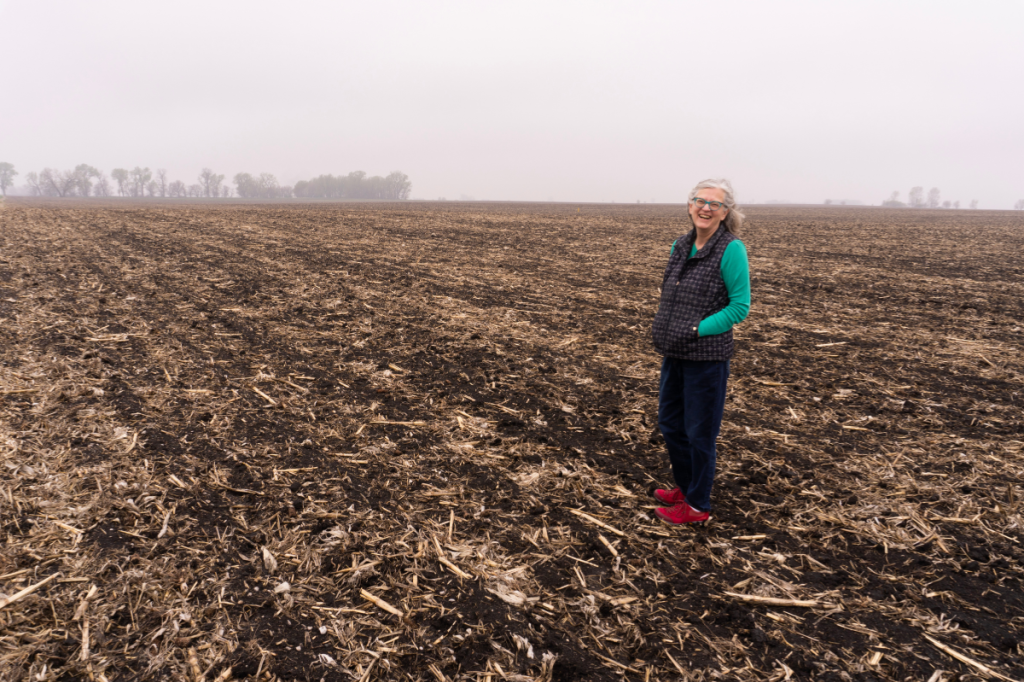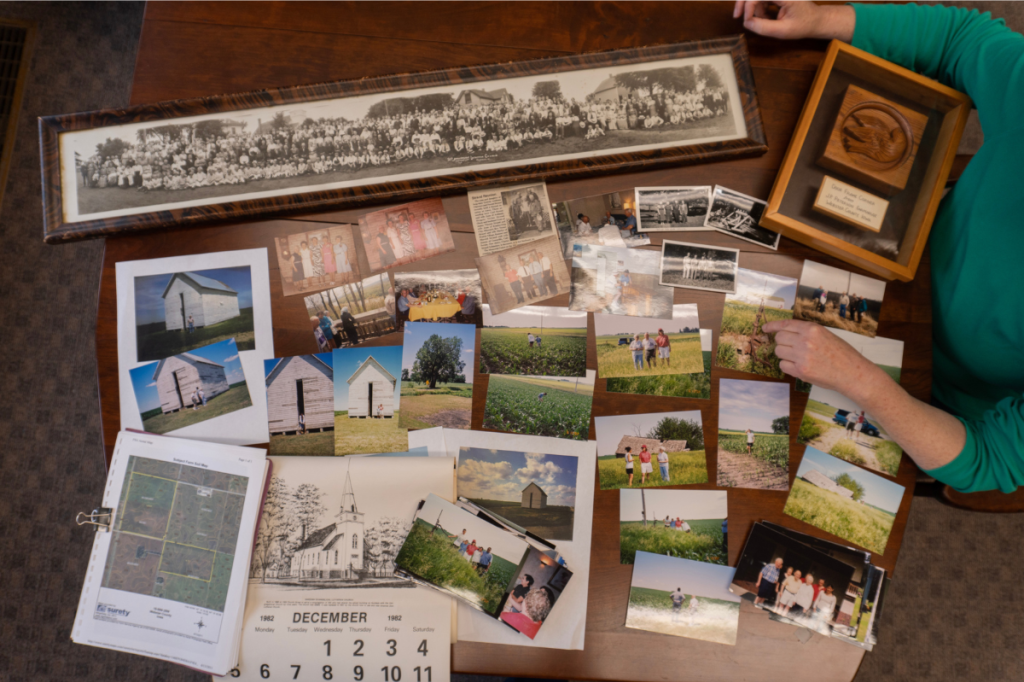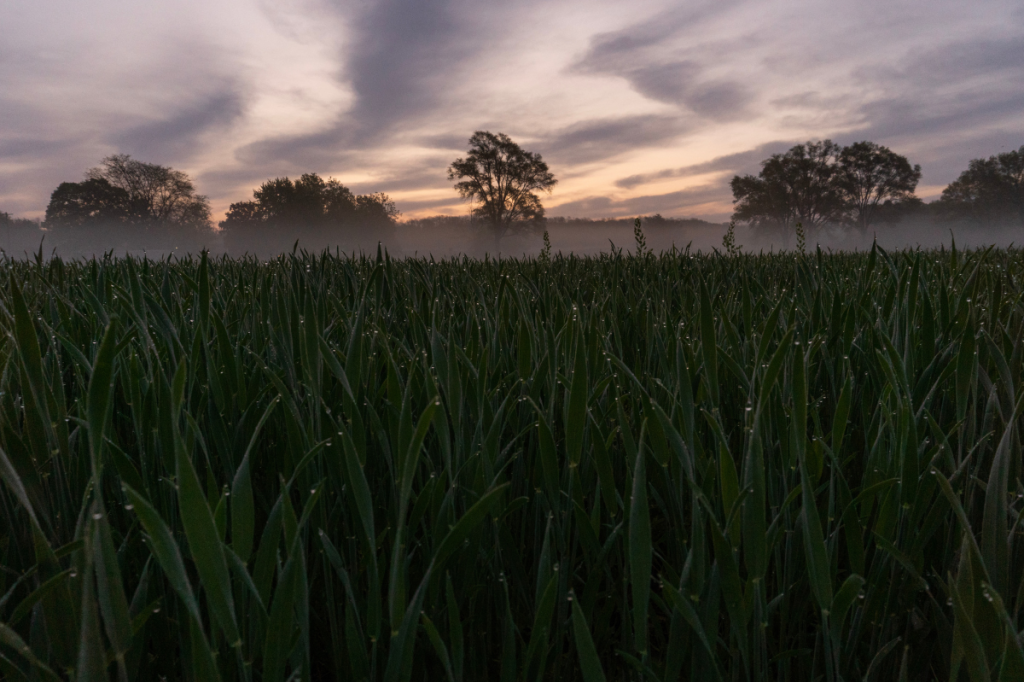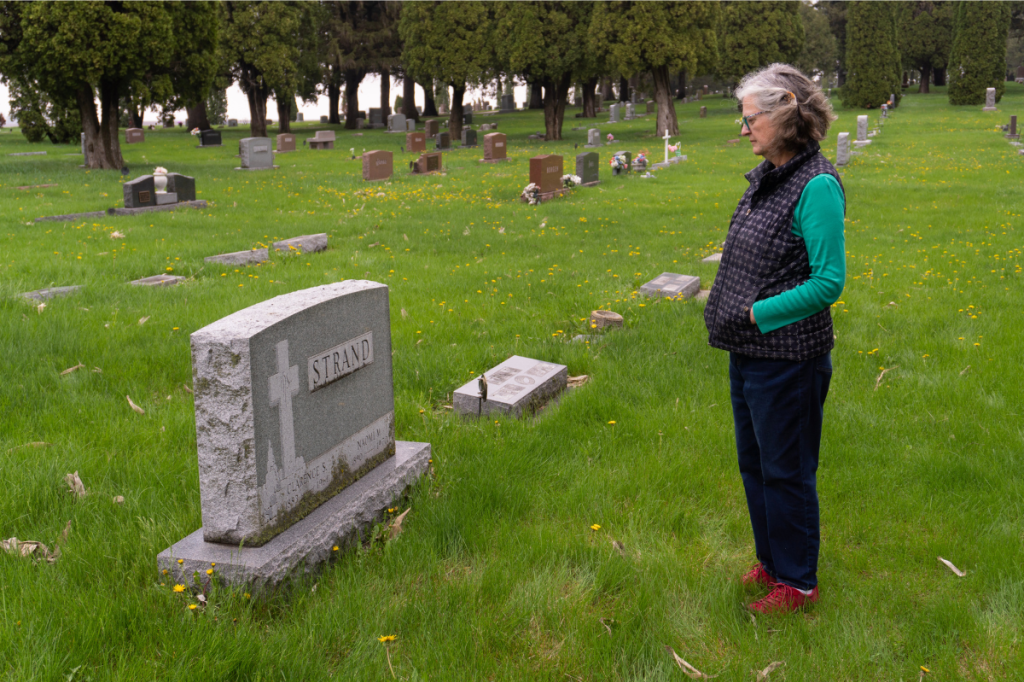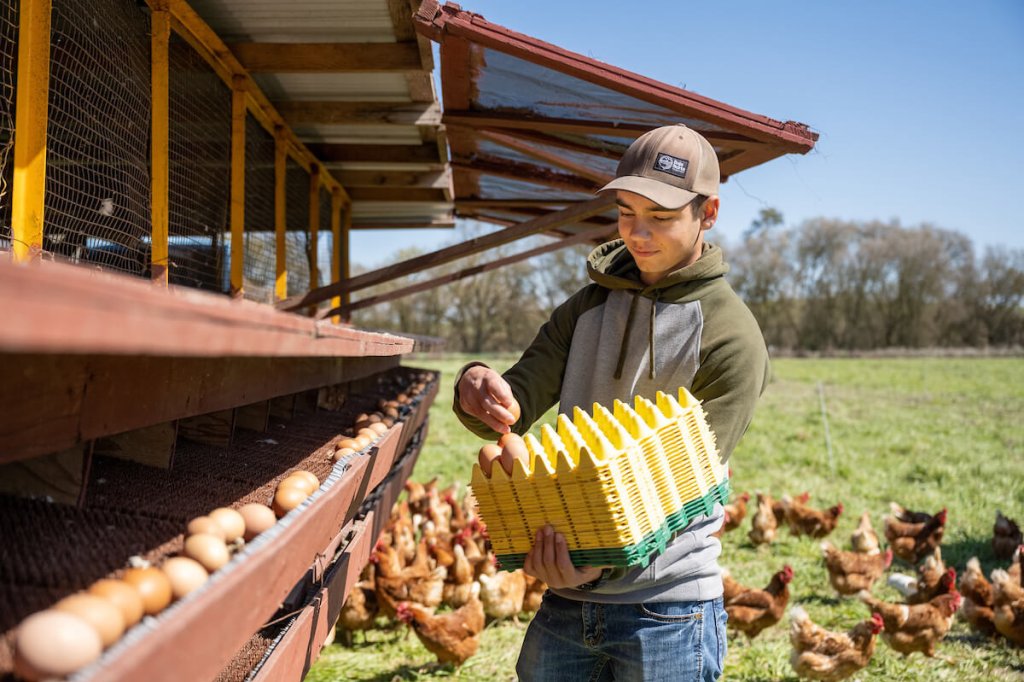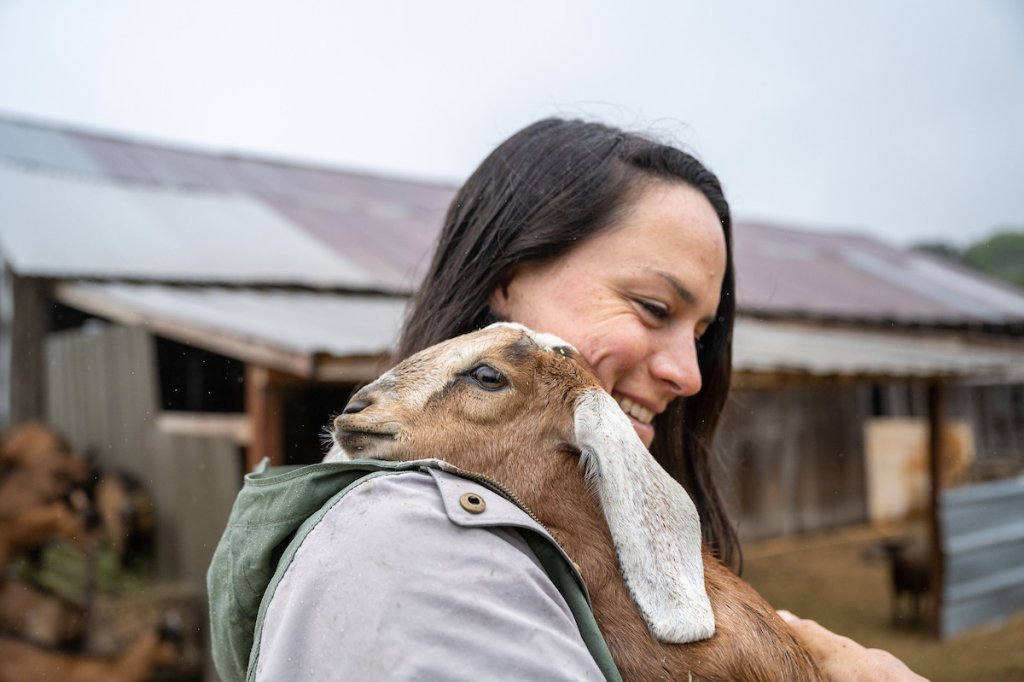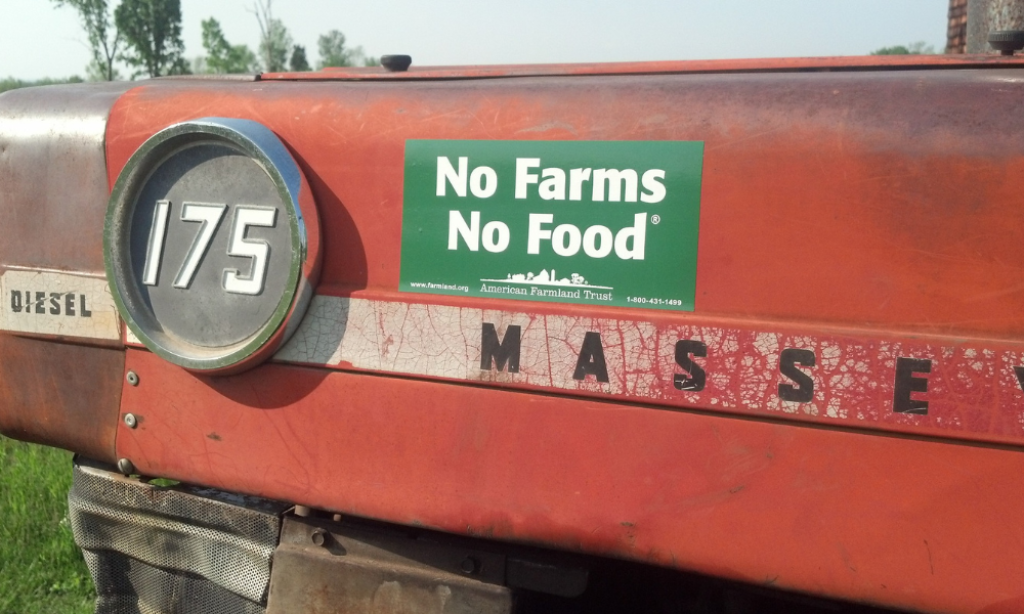Palma Strand Works to Keep Her Square on the Iowa Map Resilient
Palma Strand has never lived in Iowa, but Iowa lives in her. The 65 acres of family farmland she inherited near the small town of Gowrie are part of the fabric of her family. Though it has been two generations since her immediate family spent their life there, this place is where she and her relatives return to lay their loved ones to rest. It is the place that resides in their family as the ancestral home.
Palma is a bit reluctant to share this deep connection and may at times minimize it for fear this tender fact won’t be understood by those in the community who have a daily lived experience in the place or by those in her more urbanized social circles who may not relate to such a deep bond to land. This tension and tenderness are among the complexities in the relationship she has with her land and the tenant who now farms it.
Palma’s grandparents were among the many Swedish immigrants who settled in Gowrie, with generations of family farming already under their belts. Her father was one of six children who all went to college. He moved off the farm and pursued a career outside of agriculture. But he remained emotionally connected to the land his whole life, investing in the business of farming their family land with his brother, who went on to take over the day-to-day farming. Eventually, this uncle became Palma’s confidant when she found herself in charge. It was Palma’s father and uncle who taught her the history of the land’s stewardship, and she holds the memory of the time before industrial agriculture shifted Iowa into the most biologically altered landscape by humans in the United States. Today, less than 0.1 percent of Iowa’s original prairies are left; the rest of the land has been plowed or in some other way altered.
“My dad used to talk about how he used to drive teams of horses on the land in the 1930s, when they grew oats, barley, low lying potatoes, and orchards. It was a very diversified operation back then. Once ethanol came, it was just corn corn corn corn corn. My uncle’s perspective helped me understand that that transition to corn and soy rotations happened while he was farming – it became more industrial right before his eyes.”
When her uncle retired, a neighbor began helping with operations. With both her father and her uncle now gone, that neighbor’s son is her tenant now.
“When my dad handed it over to me, there wasn’t even a signed lease. I’m a lawyer by training, so I understood the gravity of that. But it’s common in Iowa that many things are just over a handshake. That speaks to the importance of relationships in how farming operates in Iowa and elsewhere.”
That longstanding relationship is one of the constants that Palma values amid an evolving agricultural, environmental, and political landscape. As Palma has grown to embrace her role as steward of the land from afar, she is paying closer attention to the increase in extreme weather events hitting Iowa and asking more questions about what her patch of earth can do to help the bigger picture while staying resilient long-term. Like many people, Palma has only recently begun thinking beyond the role of fossil fuel use as a contributor to climate change and making the connections to agriculture as both a contributor to emissions and as a potential part of the solution. Whether to address climate change or not, though, she is clear that she wants to find ways to do right by the land so that it can continue doing right by her family and community long into the future, including through the extremes they are already experiencing. But specifically, how to do that is something Palma is still figuring out in partnership with her tenant.
“I think this whole idea that women are farmers and women own farmland is so counter to our stereotype that even for me, I have to let it sink in that I am a woman, and I own farmland, and that’s powerful. And there’s a lot of us! Many in my position just pay the taxes and manage their tenant, but they aren’t trying to drive change.”
That desire to drive change is difficult, especially from her position off the farm. But through more learning opportunities at her fingertips and peer-to-peer learning opportunities, Palma is building confidence about what steps she and her tenant can be taking together to advance a vision for long-term resilience on their land.
“We think of agriculture as bucolic, but Iowa is like one large factory spread out on the land. And that’s not healthy. I have one tiny piece of this large factory farm in a sense. It didn’t get this way under my stewardship, but how can I move the needle to influence it? That’s what I’m grappling with. . . I’ve learned there are low till and no till, cover crops and such that you can get grants and incentives for. But it’s hard to influence this when you are a step removed.”
Leaning on workshops with Jean Eells, the Women Food and Agriculture Network (WFAN), and Practical Farmers of Iowa has been particularly helpful for her in broaching these conversations with her tenant and family members. She notes that it still feels like she’s struggling through the dark, but at least with these networks she’s struggling through the dark together with people who’ve navigated a few steps further on the path.
This collective learning among people who understand the ancestral connection and responsibility she feels towards her land is among the best tools she sees for achieving her vision.
“It’s a few small squares or rectangles on the map among all those many, many rectangles you see when you fly over, as most people do. It is a part of that factory, but each part makes a difference so if you try to do right by your part, that’s what you can do. If everyone does their part in their sphere of influence, then we get there at scale. And being a part of groups like this can help expand that sphere of influence.”
WFAN and AFT’s Women for the Land program are jointly organizing women-centered events for Iowa producers in the Fall of 2023. If you are interested in participating in these events contact [email protected]. Watch Palma’s story below.

